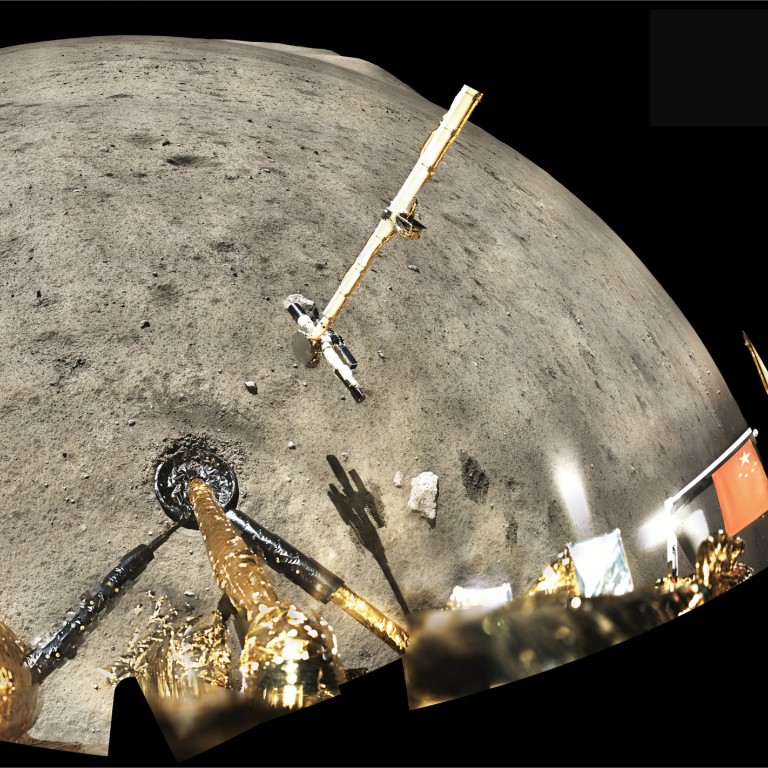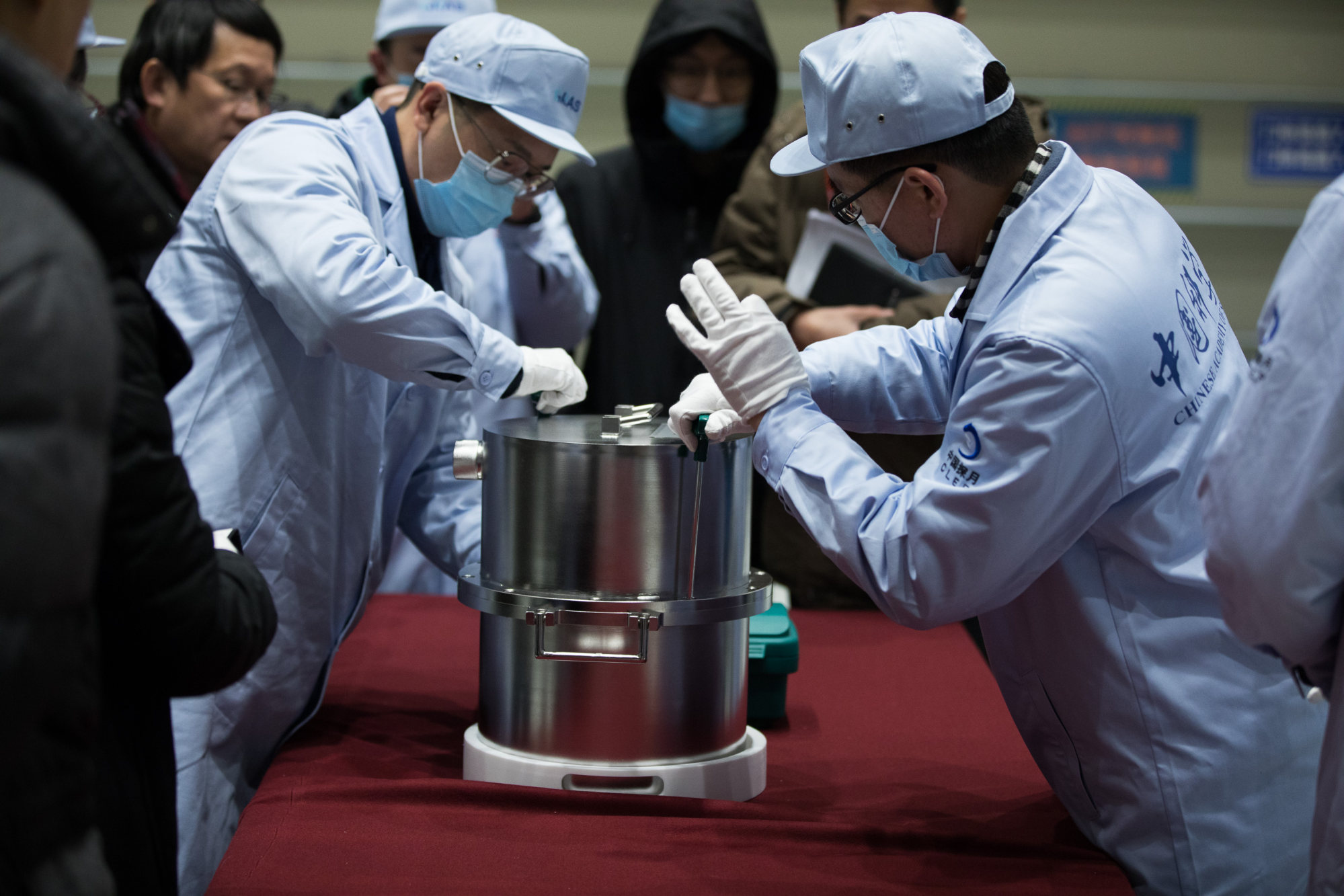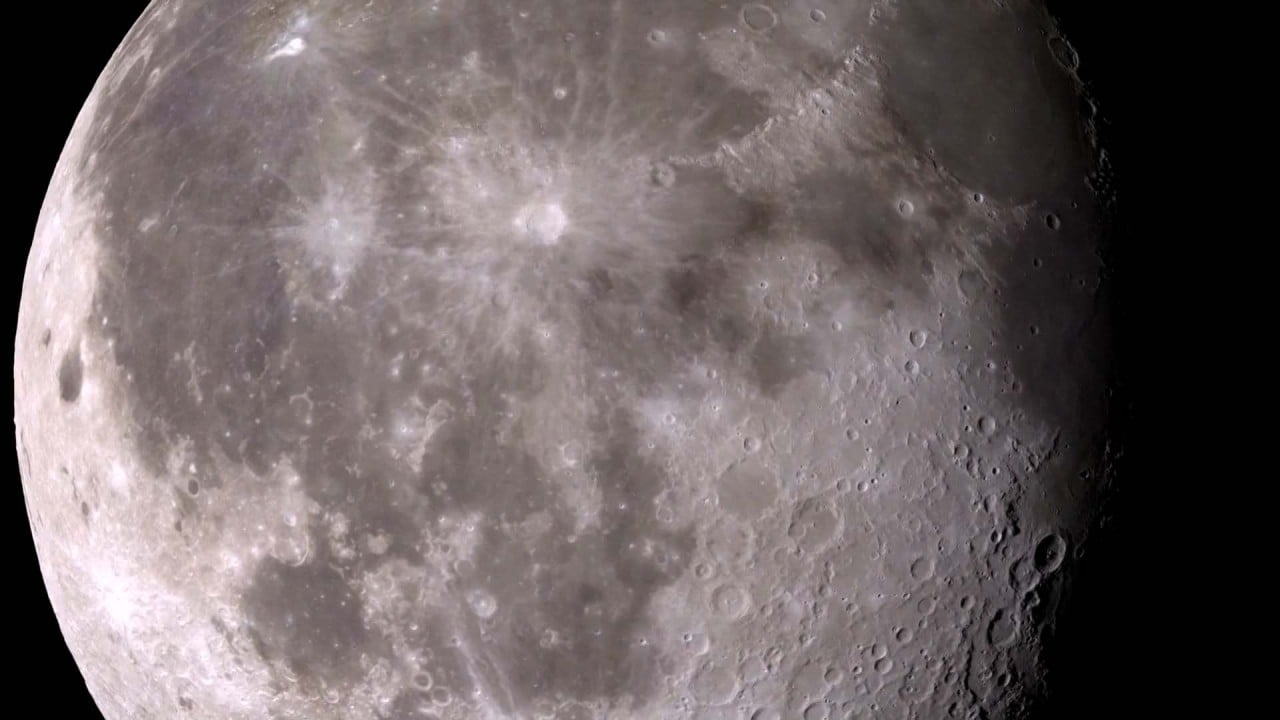
Moon particles reveal more water content than earlier estimates, thanks to the sun, Chinese study suggests
- Research led by Chinese Academy of Sciences looks at minerals brought back by the Chang’e 5 lunar mission from landing site
- Water concentration at sampling site is at least 170 parts per million, most of it created by solar action, team says in paper
And most of that water is from the sun, according to the study of lunar minerals led by researchers from the Chinese Academy of Sciences.
In December 2020, the Chang’e 5 probe brought back some 1.73kg (3.8lbs) of lunar soil to the Earth from a huge volcanic complex on the moon.
The Chinese mission not only marked the first robotic lunar sample return in nearly half a century – since the Soviet Union’s Luna 24 mission in 1976 – but also used its lander to report the first ever on-site evidence of water.
China’s lunar probe finds first on-site evidence of water on moon
The water concentration at the sampling site was at least 170 parts per million (ppm), or 170 grams per tonne of lunar soil, the team said in their recently published paper in Nature Communications journal.
The water, which mainly exists in the form of hydroxyl (OH) – a close chemical relative of free water (H2O) – forms as hydrogen ions in the solar wind bombard the moon’s surface and interact with oxygen atoms in the soil, explained paper co-author Li Xiongyao from the Institute of Geochemistry in China’s southern city of Guiyang.
This process, known as solar wind implantation, is a major process by which water is formed on the moon. Li said other sources were the moon’s interior, from back when it was still a lava ocean, or meteorites or comets which crashed onto the lunar surface.

However, Li and his colleagues found minerals to be really good water reservoirs.
Detailed analysis of the mineral particles in the Chang’e samples revealed their uppermost surface had “water content of more than 6,000ppm”, they said.
They also found the minerals’ surface to be rich in hydrogen and extremely poor in the hydrogen isotope deuterium.
That matches the hydrogen and deuterium composition of the solar wind, because the sun used up all its deuterium in nuclear reactions in its early life.
Samples brought back by the Chang’e 5 and Nasa’s Apollo lunar missions displayed similar water abundance, Li said.
However, though 170ppm is much higher than previously thought, the Chang’e 5 landing site is probably still as dry as a desert, which means extracting and using that water would be a challenging task, according to Li.


